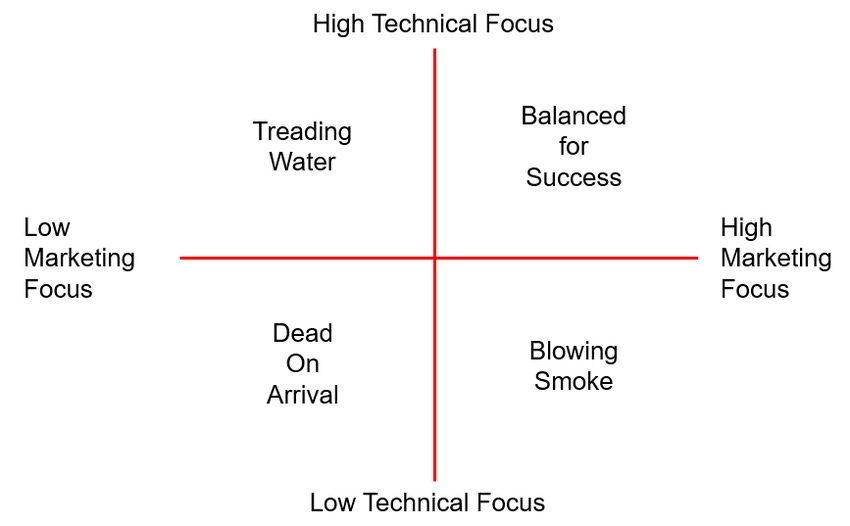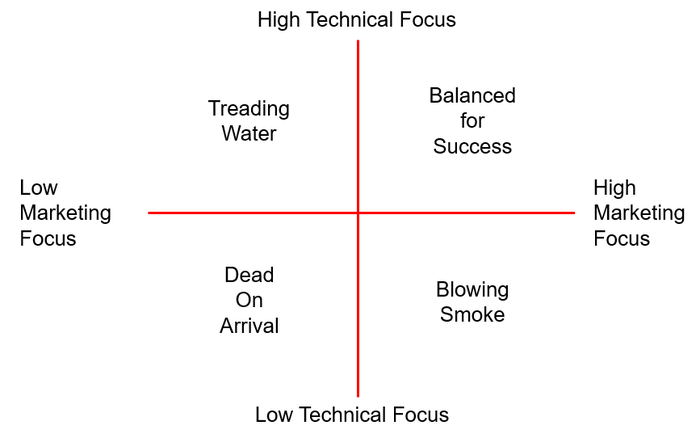The Paradox of an Embedded Product Launch
Balancing the technical and marketing is a challenge. But there needs to be a careful balance between product development and product marketing.
November 11, 2019

Designing and launching a product is one of the most exciting things that a person can do. There’s something about taking a vague idea or concept and turning it into something that is real, that can be held, and that has a positive impact on society.
Over the past 15 years, I’ve helped several dozen companies ranging from freshly coined startups through large global businesses design, launch, and market their products. I’ve seen amazing successes and a few dismal failures, but during that time I’ve also noticed that there needs to be a careful balance between product development and product marketing.
When the decision is made that a new product is going to launched, the company is faced with what I call the product / marketing paradox. It's is equivalent to the chicken and egg paradox. What comes first, the marketing or the product? If the product comes first, you’ll complete the product and have no one to sell it to. If you market the product first, you’ll build up buzz but could lose potential customer interest as they wait indefinitely for a product that may or may not ever be completed. This results in the need for a careful balance between product development and when product marketing starts. But this balance can often be upset by The Company Success Bias.
Learning The Company Success Bias
The Company Success Bias is a business’ core competency, which can be either market focused or technically focused. The core competency often reflects the backgrounds and competencies of the company’s management team. For example, I’ve seen time and time again where a startup that was created by technically oriented engineers focuses first on developing the product with little to no thought going into the marketing until the product is nearly completed. On the other hand, I often see companies that were created by marketing-oriented folks that put most of their attention on the marketing of the product before the product is ever even proved to be viable. There is this trade-off between “build it and they will come” versus “if we don’t tell them they won’t come”.
Just like most things in life, when designing and launching an embedded product, there needs to be a balance between being marketing or technically focused. To understand the consequences, we can plot technical versus marketing on a two-axis chart and see what happens to companies in the different regions as shown below:
|
|
If the company doesn’t have a marketing focus and doesn’t have the technical skills to develop their product that they are dead on arrival. (Image source: Jacob Beningo) |
|
Let’s examine this chart starting with a low technical focus. It’s obvious that if the company doesn’t have a marketing focus and doesn’t have the technical skills to develop their product that they are dead on arrival. In fact, these products never leave the drawing board. A product that has a low technical focus, but a strong marketing focus are blowing smoke.
I see these companies all the time and even worked for one early in my career. These are the companies that often show off fantastic demonstrations of their product and provide launch dates that slip, then slip again, then again, and then no one ever hears about that product again. It’s also possible that we hear about the product and then three to four years later it shows up to market, by which time all the marketing has burned out potential customers. The marketing was important, but the product was secondary.
We can get the exact opposite of blowing smoke when we have a strong focus on the technology development and a low marketing focus. In these cases, we may end up with a strong product, but the marketing wasn’t strong enough to really drive sales. I often consider these products or companies to be “treading water.” You might even consider them to be best kept secrets. In this situation, there can often be a limited timeframe to generate sales before the company fails if it is a startup. For a larger, established company, efforts usually transition to the marketing focused stage and the sales will start to ramp up.
Mastering the Balanced for Success Quadrant
The real trick when designing and launching an embedded product is to end up in the upper right-hand corner, in the "balanced for success" quadrant. I’ve found that these product launches are usually the most successful. There is a careful balance and plan for both the technical development and the marketing of the product. The right team is in place to champion both causes so that as the technical product is completed, there is a customer base eager for the product.
RELATED ARTICLES:
There is so much that goes into designing and launching a product that it is impossible to cover in a blog. Teams need to consider the business side of the product and overcome the challenges that technical teams face when developing a modern embedded product. Balancing the technical and marketing aspects is just one challenge of many. In order to go into more detail on this topic and share my own experiences, I will be speaking in November at the free DesignNews Digikey Continuing Education Center on “Designing and Launching an Embedded Product."
There will be five sessions that cover:
The Business of Product Development
Success through Design and Development Processes
Scalability, Architectures and Minimally Viable Products
Achieving Quality and Reasonable Time-To-Market
Techniques for Accelerating Time-To-Market
We will mainly be focusing on the technical aspects but will go into more details on the business side for developers who may be considering starting their own companies or launching their own products. If you are currently developing a product or thinking about launching one in the future, I hope to see you there!
Click here for more information about the CEC Course and to register!
Jacob Beningo is an embedded software consultant who currently works with clients in more than a dozen countries to dramatically transform their businesses by improving product quality, cost and time to market. He has published more than 200 articles on embedded software development techniques, is a sought-after speaker and technical trainer, and holds three degrees which include a Masters of Engineering from the University of Michigan. Feel free to contact him at [email protected], at his website, and sign-up for his monthly Embedded Bytes Newsletter.
About the Author(s)
You May Also Like




.jpg?width=300&auto=webp&quality=80&disable=upscale)

